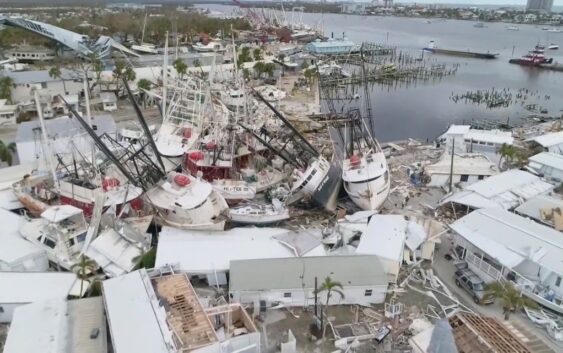- Caught on camera | Tornado touches down in Missouri
- Carolina Hurricanes playoff tickets go on sale next week
- Weather Impact Alert: Cold front could trigger severe weather in Houston area this weekend | See timeline
- Violent storms cut through the South and Midwest, spawning tornadoes and killing 3
- Above-normal active 2025 hurricane season predicted by Colorado State University
Hurricane inflation: The costliest storms in today's dollars

Every year the cost of landfalling hurricanes and tropical storms increases here in the United States. Here is how and why hurricane season is getting more expensive
CHARLOTTE, N.C. — The United States has seen at least one tropical event costing a billion dollars for eight years in a row now — nine, including this year from Beryl.
The cost of tropical storms and hurricanes goes up every year. Over the past 30 years, our average damage cost has increased around 3% to 4% every year.
The Top 3 costliest hurricanes
Number 3: Hurricane Ian
Hurricane Ian in 2022 was a devastating hurricane that caused over $111 billion in damage. This only happened two years ago, and costs are $6.7 billion more expensive.
Number 2: Hurricane Harvey
The second costliest was Hurricane Harvey in 2017. Harvey was a major hurricane at landfall and made history from its historic rainfall when it stalled over eastern Texas for days.
Harvey caused $125 billion in damage but that cost in today’s dollars is around $159 billion, meaning damage would be over $33 billion more compared to just seven years ago.
Number 1: Hurricane Katrina
Katrina is one of the most famous hurricanes, but it is also the costliest.
In 2005, Katrina made landfall as a category 3 hurricane and caused $125 billion in damage. Well, based on the 2024 Consumer Price Index, that cost would now be $200 billion.
That is up 60% compared to 19 years ago.
Notable hurricanes in the Carolinas
- Hurricane Floyd in 1999 costs would be 86% more in 2024 ($6.5 billion would be $12.1 billion today)
- Hurricane Fran’s cost would be double from 1996 ($5 billion would be $10 billion today)
- Hugo caused $9 billion in damage back in 1989. The cost today would be $22.6 billion, up a whopping 151%.
Why these costs will continue to go up
Storms are causing more damage because there are simply more people and property in vulnerable areas like the coast and river flood plains. Hurricane Andrew in 1992 struck Homestead, Florida directly. That population today is more than triple of what it was over 30 years ago.
Along with that, climate change continues to increase hurricane frequency and intensity. According to the US National Climate Assessment, Sea level rise is also worsening hurricane storm surge.
Given all these compounding hazards and risks, there is an increased need to focus on where we build, how we build, and investing in infrastructure updates that are designed for the new climate norm.
Contact Chris Mulcahy at cmulcahy@wcnc.com and follow him on Facebook, X, Instagram and TikTok.